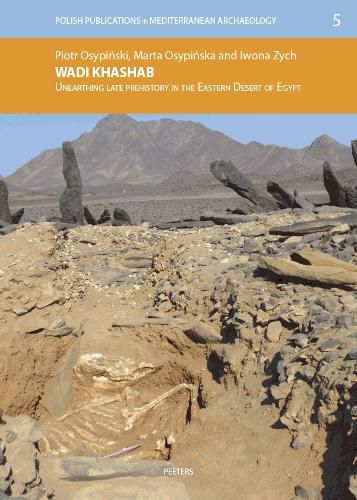Readings Newsletter
Become a Readings Member to make your shopping experience even easier.
Sign in or sign up for free!
You’re not far away from qualifying for FREE standard shipping within Australia
You’ve qualified for FREE standard shipping within Australia
The cart is loading…






The 5th millennium BC megalithic ceremonial complex at Wadi Khashab in
the Eastern Desert of Egypt is located almost directly in the middle of
the Eastern Desert, on a wadi trail connecting the Valley of the Nile
with the Red Sea. The volume presents the results of three seasons of
excavation of this site, which featured a human burial in the center of
several burials of cattle and sheep, within an enclosure of upright
stone slabs that must have formed an eye-catching landmark for many
miles up and down the wadi, also for the pastoral communities traversing
the mountains in later times.
The study of the animal remains from
this remote site in the poorly known Eastern Desert has provided a very
well documented series of osteological, osteometric and
archaeozoological data on early cattle and sheep. It adds to the current
knowledge of cattle domestication in the Neolithic and early cattle
mobility in northeastern Africa, offering unique information on the uses
of domestic livestock not only in the funerary traditions, but also in
mobility systems. It also contributes to the discussion on the origins
and domestication of the auroch in Africa, pointing to a local African
origin for the cattle.
$9.00 standard shipping within Australia
FREE standard shipping within Australia for orders over $100.00
Express & International shipping calculated at checkout
The 5th millennium BC megalithic ceremonial complex at Wadi Khashab in
the Eastern Desert of Egypt is located almost directly in the middle of
the Eastern Desert, on a wadi trail connecting the Valley of the Nile
with the Red Sea. The volume presents the results of three seasons of
excavation of this site, which featured a human burial in the center of
several burials of cattle and sheep, within an enclosure of upright
stone slabs that must have formed an eye-catching landmark for many
miles up and down the wadi, also for the pastoral communities traversing
the mountains in later times.
The study of the animal remains from
this remote site in the poorly known Eastern Desert has provided a very
well documented series of osteological, osteometric and
archaeozoological data on early cattle and sheep. It adds to the current
knowledge of cattle domestication in the Neolithic and early cattle
mobility in northeastern Africa, offering unique information on the uses
of domestic livestock not only in the funerary traditions, but also in
mobility systems. It also contributes to the discussion on the origins
and domestication of the auroch in Africa, pointing to a local African
origin for the cattle.